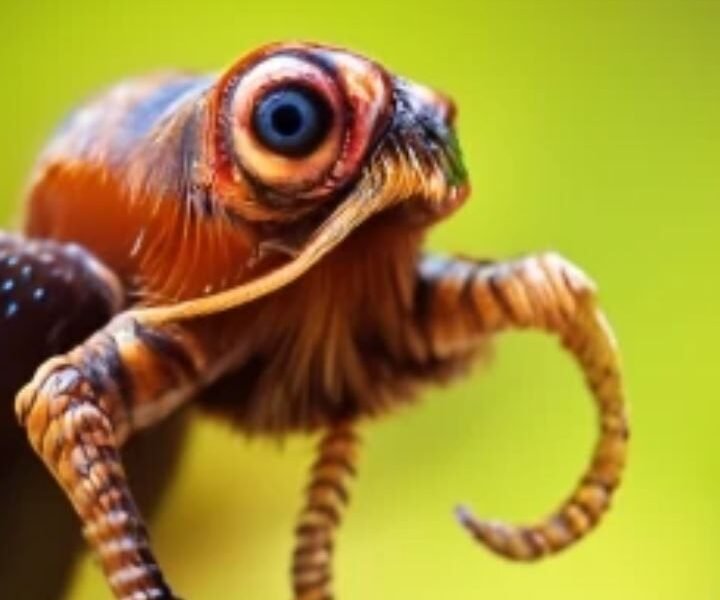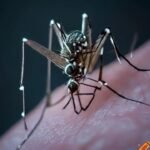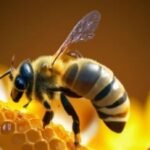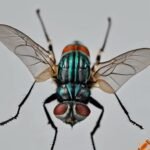Introduction: Cockchafers, also known as May bugs or May beetles, are large, flying beetles that can cause damage to lawns, gardens, and agricultural crops. These pests are notorious for their voracious appetite for plant roots, particularly grass roots, which can lead to patches of dead or dying vegetation. Cockchafers are most active during the spring and early summer months, emerging from the soil to mate and lay eggs. In this comprehensive guide, we’ll explore a variety of strategies and techniques for getting rid of cockchafers effectively and preventing infestations from recurring.
Understanding Cockchafer Behavior: Cockchafers are members of the scarab beetle family (Scarabaeidae) and are commonly found in temperate regions around the world. Adult cockchafers are large beetles measuring 2 to 3 centimeters in length, with shiny brown or black bodies and distinctive antennae. They are attracted to light sources at night and are often seen flying clumsily around outdoor lights. Cockchafer larvae, known as white grubs, live in the soil and feed on plant roots, causing damage to lawns, pastures, and crops.
- Cultural Control Methods: Cultural control methods involve modifying the environment to make it less hospitable to cockchafers and their larvae. This includes practices such as maintaining healthy turfgrass, aerating and dethatching lawns, and minimizing irrigation to reduce soil moisture levels. Avoid overfertilizing lawns with nitrogen-rich fertilizers, as this can attract adult cockchafers to lay eggs. Consider planting resistant grass species or creating barriers such as physical barriers or trenching to prevent cockchafer larvae from accessing vulnerable plants.
- Biological Control Agents: Biological control agents such as nematodes, parasitic wasps, and predatory beetles can be used to target cockchafer larvae in the soil. Nematodes are microscopic roundworms that infect and kill cockchafer larvae without harming beneficial organisms or the environment. Parasitic wasps lay their eggs inside cockchafer larvae, which hatch and consume the larvae from within. Predatory beetles such as ground beetles and rove beetles feed on cockchafer eggs, larvae, and adults, helping to reduce population numbers.
- Chemical Control Methods: Chemical control methods involve the use of insecticides to target cockchafers at various life stages. Insecticides containing active ingredients such as imidacloprid, chlorpyrifos, or thiamethoxam can be applied to lawns, gardens, or agricultural fields to kill cockchafer larvae in the soil. Follow the manufacturer’s instructions carefully when applying insecticides, and avoid using them near water sources or in areas where beneficial insects are present. Consider consulting with a pest control professional for assistance with chemical control methods.
- Trap and Removal: Traps can be used to capture adult cockchafers and prevent them from mating and laying eggs in the soil. Light traps or pheromone traps can be placed in gardens, lawns, or agricultural fields to attract and capture adult cockchafers. Remove trapped beetles regularly and dispose of them by drowning or freezing to prevent them from escaping and mating. Consider using multiple traps strategically placed around the perimeter of infested areas to maximize capture rates.
- Environmental Modifications: Modifying the environment to make it less attractive to cockchafers can help reduce population numbers and prevent infestations. This includes practices such as removing thatch and organic debris from lawns, gardens, and agricultural fields to eliminate potential breeding sites and hiding places for cockchafers. Reduce outdoor lighting at night to minimize attraction to adult cockchafers, and consider using physical barriers such as row covers or netting to protect vulnerable plants from damage.
Conclusion: Cockchafer infestations can be challenging to control, but with the right approach, they can be effectively managed and prevented from recurring. By understanding cockchafer behavior and biology and implementing a combination of cultural, biological, chemical, and mechanical control methods, you can get rid of cockchafers and protect your lawns, gardens, and crops from damage. Remember to monitor infested areas regularly, adapt control strategies as needed, and seek professional assistance if infestations persist. With dedication, patience, and persistence, you can successfully manage cockchafer populations and enjoy healthy, thriving outdoor spaces.




